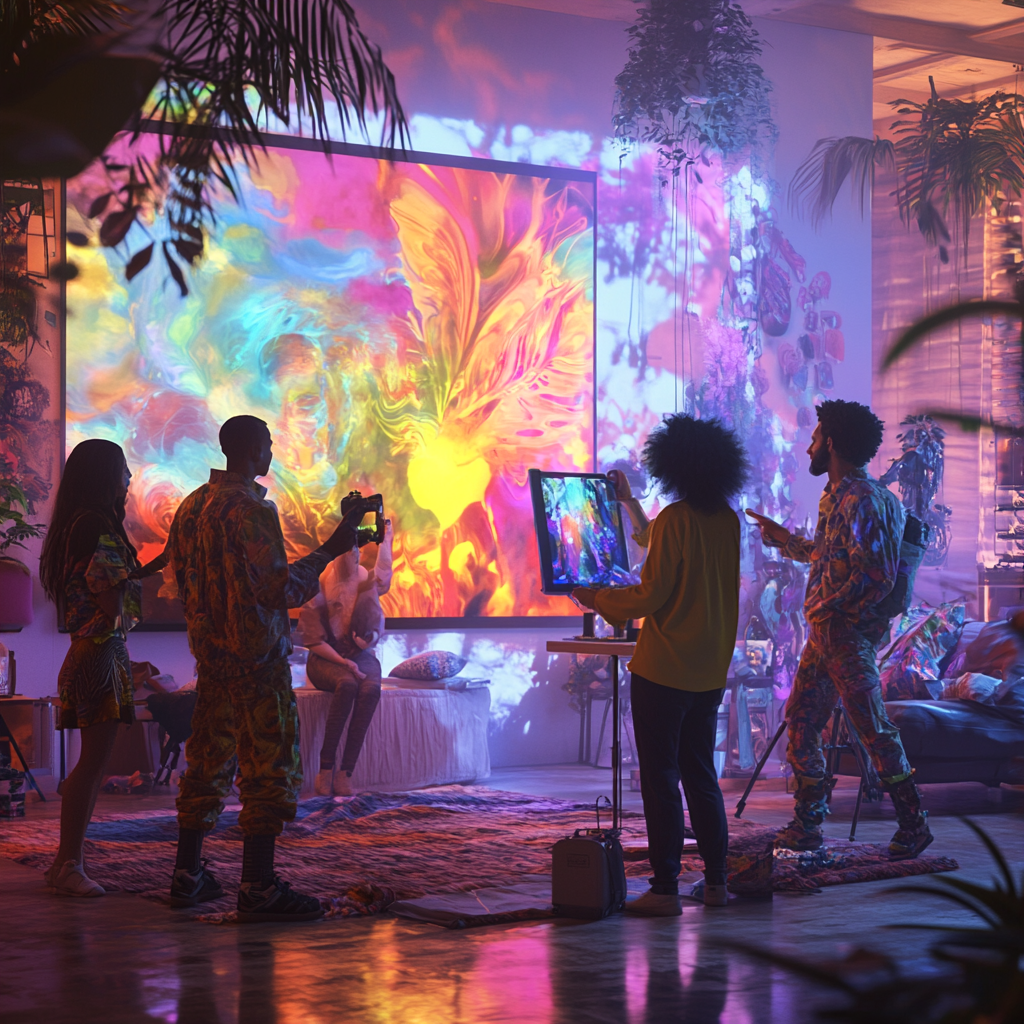A Journey into Collaborative Art and Transformation
Art has always been a profound means of human connection. Whether through music, dance, painting, or poetry, it transcends language and cultural boundaries to evoke emotions and build bridges between people. Yet, in an increasingly digital world, the way we experience and create art is changing. The question arises: how can technology not just preserve this connection, but deepen it? How can it bring us closer to the art we love and closer to one another?
Imagine a platform where creativity takes center stage, but the roles of artist and audience are no longer distinct. Picture yourself attending a live performance where you’re not just watching but interacting - shaping the visuals, influencing the music, or even collaborating on choreography. Think of a virtual studio where fans and artists from different corners of the globe work together to compose music, write poetry, or paint a shared masterpiece. Such a platform wouldn’t just showcase art; it would foster community, collaboration, and a sense of shared purpose.
The foundation of this vision lies in breaking down barriers - between people, between art forms, and between traditional and digital spaces. It’s about empowering individuals to not only consume but create, and to do so in ways that feel personal, meaningful, and accessible. A dancer could choreograph in virtual reality while others contribute by designing the lighting and soundscape. A poet might use voice recognition to compose verses, which are then transformed into visual art by an AI collaborator. These experiences would invite participation at every level, turning what was once a solitary or spectator activity into a shared journey.

Technology, when used thoughtfully, can be a powerful enabler of such connections. Multimodal interaction - through gestures, voice, or motion - makes engagement intuitive and natural, while AI adds a layer of creative support that’s as inspiring as it is practical. Imagine an AI agent that acts not just as a tool, but as a co-creator. It might help you refine a melody, suggest improvements to your writing, or transform your sketches into vibrant digital art. The beauty of such a system is that it adapts to the user, amplifying their unique creativity rather than replacing it.
Equally important is the sense of community this platform would foster. Collaboration would be at its heart, not just among fans, but also between fans and artists. Picture a live virtual concert where fans collectively influence the performance, creating something dynamic and interactive. Or a global community coming together to curate a virtual gallery of their collaborative works. These moments wouldn’t just connect people with the art they love and they would connect people with one another in ways that feel deeply human.
The potential of such a platform extends beyond entertainment. It could serve as a space for education, where beginners learn alongside experienced creators. It could become a hub for cultural exchange, where diverse perspectives come together to produce something entirely new. Most of all, it could redefine how we think about art, not as something static or confined to a single medium, but as something alive, collaborative, and ever-evolving.
The idea of transforming the relationship between technology, art, and human connection is exciting, but it’s also challenging. How do we design a platform that is intuitive enough for anyone to use, yet powerful enough to inspire seasoned creators? How do we ensure it enriches human creativity rather than overshadowing it? And how can it remain a space for genuine connection in a world where digital interactions often feel shallow?
These are the questions that shape this vision, and the answers will come from those who are most passionate about art and creativity. What would inspire you to take part in a platform like this? What kinds of features or experiences would make you feel truly connected and not just to the art, but to the people creating it? And how can technology help preserve the emotional depth that makes art so powerful in the first place?
This vision is more than just a dream. It’s an invitation to rethink how we experience art, to reimagine how we create it, and to explore new ways of connecting with one another. The possibilities are limitless, and they begin with a simple yet profound idea: